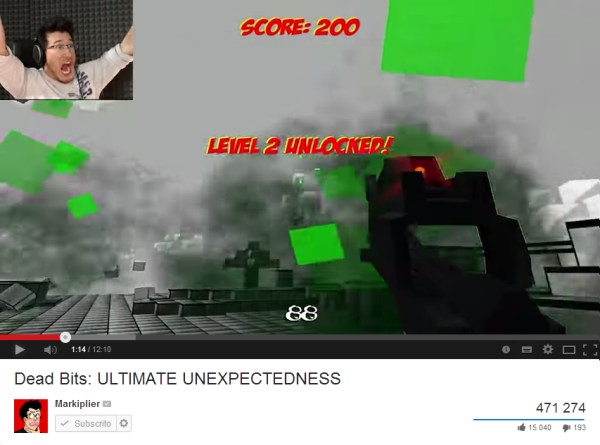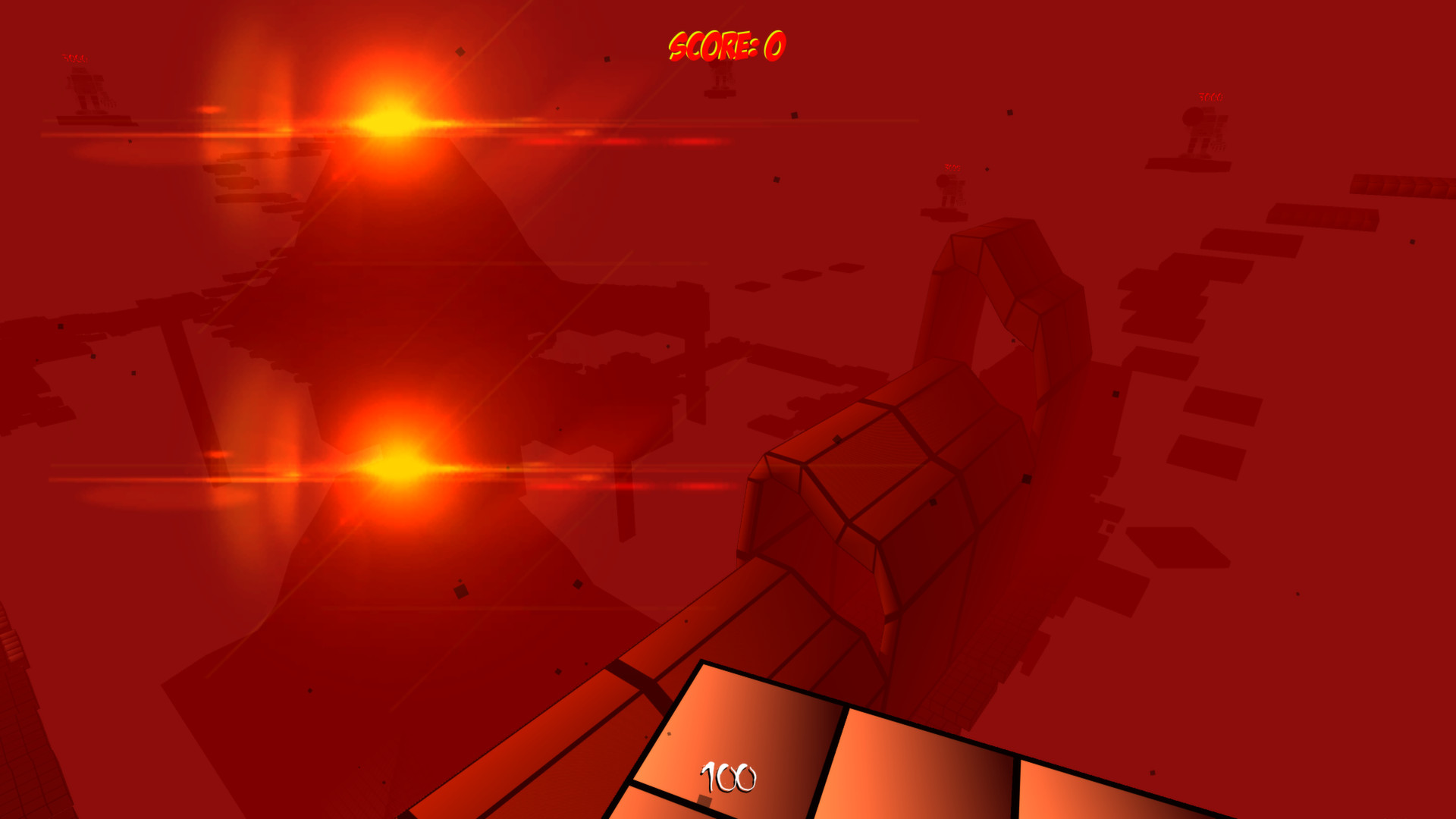Dead Bits is a first-person shooter for the PC and MAC. Contains 9 levels and an original Dubstep Soundtrack. The Dead also begin incorporating several traditional folk, blues, and R&B cover tunes, such as Merle Haggard's 'Mama Tried,' Kris Kristofferson's 'Me & Bobby McGee,' as well as a few that had been in their songbook for several years, including John Phillips' 'Me & My Uncle' and 'Big Boss Man,' a blues standard popularized by Jimmy Reed. Deadbit is a small and independent studio. And a child of crazy idea to change something in life. After gathering experience when developing an AAA mobile games in the company, we realized that this is not the right way to create innovative and fun games.
Why Download The Typing of the Dead using YepDownload? The Typing of the Dead Simple & Fast Download! Works with All Windows (64/32 bit) versions! The Typing of the Dead Latest Version! Fully compatible with Windows 10; Disclaimer The Typing of the Dead is a product developed by SEGA. This site is not directly affiliated with SEGA.
Samba De Amigo! If you can’t tell, Barry and George are excited to discuss the arcade, Dreamcast and Wii releases of Samba De Amigo on this episode of SEGA Talk! Learn about the various maraca accessories, the differences between releases and the future of the Sonic Team rhythm dance franchise.

Support us on Patreon! Get early access, tell us what games to cover, and have your SEGA memories read at the end and more!
http://segabits.com/wp-content/uploads/2020/12/SegaTalkSambaDeAmigo.mp3[iTunes – Stitcher – YouTube – Play Music – RSS – Download]
If you want to give us feedback, suggest a topic for the next podcast or want to ask a question for us to answer on the next episode you can add them as a comment below or send theme directly to our email. Make sure you use subject line ‘SEGA Talk’ and as always, thanks for listening!

Dead Rabbit holding a brickbat as a weapon in July 1857 | |
| Founding location | Five Points, Manhattan, New York (present-day Worth Street, Baxter Street, and Columbus Park), Manhattan, New York City |
|---|---|
| Years active | 1830s-1860s |
| Territory | Five Points, Manhattan |
| Ethnicity | Irish and Irish-American |
| Criminal activities | Street fighting, knife fighting, assault, murder, robbery, arson, rioting |
| Allies | Chichesters, Tammany Hall, Plug Uglies, Roach Guards, Mulberry Street Boys, Municipal Police, Forty Thieves, Shirt Tails, Kerryonians |
| Rivals | Bowery Boys, Atlantic Guards, O'Connell Guards, American Guards, True Blue Americans, Metropolitan Police, Empire Guards |
The Dead Rabbits was the name of an Irish American criminal street gang active in Lower Manhattan in the 1830s to 1850s. The Dead Rabbits were so named after a dead rabbit was thrown into the center of the room during a gang meeting, prompting some members to treat this as an omen, withdraw, and form an independent gang. Their battle symbol was a dead rabbit on a pike.[1] They often clashed with Nativist political groups who viewed Irish Catholics as a threatening and criminal subculture.[2][3] The Dead Rabbits were given the nicknames the 'Mulberry Boys' and the 'Mulberry Street Boys' by the New York City Police Department because they were known to have operated along Mulberry Street in the Five Points.[4][5][6]
History[edit]
The original Dead Rabbits were founded by disgruntled gang members of the Roach Guards, who became the largest Irish crime organization in early 19th-century Manhattan, having well over 100 members when called up for action. Their chief rival gang was the Bowery Boys, native-born New Yorkers who supported the Know Nothing anti-immigrant political party.[1]
These two rival gangs fought more than 200 gang battles in a span of 10 years, beginning in 1834, and they often outmanned the police force and even the state militias. They were also in the forefront of the Dead Rabbits Riot of 1857, and the 1863 New York Draft Riots in the American Civil War. Besides street-fighting, the Dead Rabbits supported politicians such as Fernando Wood and the Tammany Hall machine, whose platforms included the welfare and benefit of immigrant groups and minorities, and under the leadership of Isaiah Rynders the gang acted as enforcers to violently persuade voters during elections to vote for their candidates.[3][7] According to legend, one of the most feared Dead Rabbits was 'Hell-Cat Maggie', a woman who reportedly filed her teeth to points and wore brass fingernails into battle.[8] One of the most prominent Dead Rabbit gang leaders, John Morrissey, would later become a Democratic State Senator and member of the U.S. House of Representatives who vigorously represented Irish-American Roman Catholics for years to come.[citation needed]
New York's Democrats were divided into two camps: those who supported Mayor Fernando Wood and those who opposed him. The Bowery gangs were among the latter, while the Dead Rabbits were supporters of Wood. Thus, the Bowery Boys threw their support in league with state Republicans, who proposed legislation that would strip Wood of certain powers and place them in the hands of Albany. One of these proposals was to disband the Municipal Police Department, in which Wood's supporters had a controlling interest, and replace it with a state-run Metropolitan Police Department. Wood refused to disband his Municipal Department, and so for the first half of 1857, the two rival departments battled it out on the streets of the city until the courts ordered the Municipals to disband that July. On July 4, a riot occurred between the Dead Rabbits and the Metropolitan Police, and the Bowery gangs against the Municipal Police, Mulberry Street Boys, Roach Guards, and Dead Rabbits in Bayard Street.[9]
There was a similar gang in Liverpool, England, in the late 19th century, which mobilized as a militia in times of crisis.[10]
Song[edit]
Lyrics detailing the Dead Rabbits' battle with the Bowery Boys on July 4, 1857, were written by Henry Sherman Backus[11] and Daniel Decatur Emmett:
Chorus
Then pull off the coat and roll up the sleeve,
For Bayard is a hard street to travel;
So pull off the coat and roll up the sleeve,
The Bloody Sixth is a hard ward to travel I believe.
Like wild dogs they did fight, this Fourth of July night,
Of course they laid their plans accordin';
Some were wounded and some killed, and lots of blood spill'd,
In the fight on the other side of Jordan.
Chorus
The new Police did join the Bowery boys in line,
With orders strict and right accordin;
Bullets, clubs and bricks did fly, and many groan and die,
Hard road to travel over Jordan.
Chorus
When the new police did interfere, this made the Rabbits sneer,
And very much enraged them accordin';
With bricks they did go in, determined for to win,
And drive them on the other side of Jordan.
Chorus
Upon the following day they had another fray,
The Black Birds and Dead Rabbits accordin;
The soldiers were call'd out, to quell the mighty riot,
And drove them on the other side of Jordan.
In popular culture[edit]
In films and television[edit]
The Dead Rabbit Riot was featured in the History Channeldocumentary television seriesHistory's Mysteries in 1998.The story of the New York Dead Rabbits is told, in highly fictionalized form, in Martin Scorsese's 2002 film Gangs of New York, which was partially inspired by Herbert Asbury's book Gangs of New York. In the 2014 film, Winter's Tale, the Dead Rabbits and the Short Tails are featured prominently; a similar theme pervades Mark Helprin1983 novel of the same name.[citation needed]The fourth season of the 2014 television series, Hell on Wheels has a few Dead Rabbit characters.
In literature[edit]
A book of poetry by Richard Griffin, The Dead Rabbit Riot, A.D. 1857: And Other Poems, was published in 1915.Patricia Beatty's 1987 historical children's fiction novel Charlie Skedaddle mentions Dead Rabbits (the main character is a Bowery Boy).[citation needed]
In art[edit]
Artist George Henry Hall's 1858 painting is titled A Dead Rabbit (also entitled Study of the Nude or Study of an Irishman), which depicts a dead Dead Rabbit gang member killed during the riot on July 4, 1857 in New York City's Lower East Side.[citation needed]

See also[edit]
References[edit]
- ^ abBuddy, James. Gangs in America's Communities. SAGE Publications, Inc; Buddy edition (November 9, 2011). pg. 5; ISBN978-1412979535
- ^Maffi, Mario.Gateway to the Promised Land: Ethnicity and Culture in New York's Lower East Side (Revealing Antiquity; 8), NYU Press; 1st edition (April 1, 1995). pg. 129. ISBN978-0814755082
- ^ abO'Kane, James. The Crooked Ladder: Gangsters, Ethnicity, and the American Dream. Transaction Publishers; New edition (January 31, 2002), pp. 55-57; ISBN978-0765809940
- ^Smith, Carter F. (2017). Gangs and the Military: Gangsters, Bikers, and Terrorists with Military Training. Lanham, MD: Rowman & Littlefield. p. 11. ISBN9781442275171.
- ^The Encyclopedia of New York City: Second Edition. New Haven, CT: Yale University Press. 2010. ISBN978-0300182576.
- ^Caldwell, Mark. (2005). New York Night: The Mystique and Its History. New York, NY: Simon and Schuster. p. 146. ISBN9780743274784.
- ^10 Deadly Street Gangs Of The Victorian Era, listverse.com, February 19, 2015.
- ^'7 Infamous Gangs of New York - History Lists'. history.com. Retrieved 2017-09-06.
- ^'Rioting And Bloodshed; The Fight At Cow Bay. Metropolitans Driven from the 6th Ward. Chimneys Hurled Down Upon the Populace. 'Dead Rabbits' Against the 'Bowery hi.', New York Daily, July 6, 1857.
- ^Macilwee, Michael. The Gangs of Liverpool: From the Cornermen to the High Rip The Mobs That Terrorised a City. Milo Books, 2006; ISBN1-903854-54-7
- ^'Murder by Gaslight: The Saugerties Bard'. murderbygaslight.com. Retrieved 2017-09-06.
Sources[edit]
- Asbury, Herbert. The Gangs of New York. New York: Alfred A. Knopf, 1928; ISBN1-56025-275-8
- Sifakis, Carl. The Encyclopedia of American Crime. New York: Facts on File Inc., 2001; ISBN0-8160-4040-0
External links[edit]
Dead Bits Song
